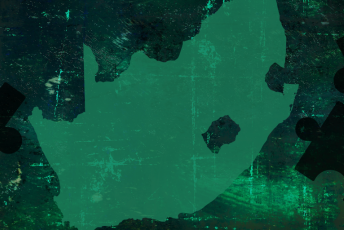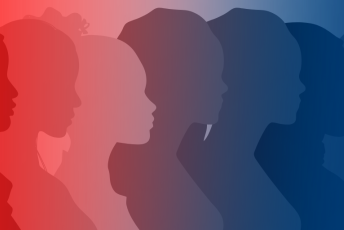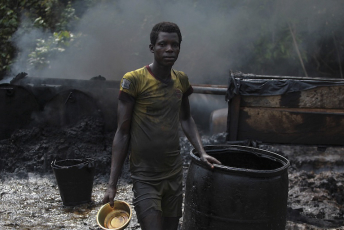On 16 January 2025, a local newspaper in Kenya revealed that trans-Saharan human trafficking syndicates are deceiving Somali refugees living in Kenyan camps. The Magafe – a Libyan-based criminal group – is reportedly leading a kidnapping and trafficking network that exploits Somali refugees, appealing to their aspirations with false promises of relocation to Europe. Mostly young refugees are drawn into dangerous journeys that often result in severe abuse, hardship and can even be fatal.
Refugees living in Kenyan camps already face significant challenges. In 2024, the United Nations High Commissioner for Refugees’ Kenya country programme reported receiving only 23% of the required funding, primarily due to insufficient international aid.
United States (US) President Donald Trump’s 2025 executive orders to cut 90% in foreign contracts from the US Agency for International Development, an institution that has long played a crucial role in providing food, shelter and other essential support for refugees and migrants in Kenya, have worsened these challenges.
Limited access to essential government services has also exacerbated problems in obtaining refugee documentation, which impedes their ability to secure work permits.
Due to these pressures, and under the belief that better opportunities must exist abroad, young refugees are vulnerable to recruitment by trafficking networks.
According to the Kenyan Directorate of Criminal Investigations (DCI) Officer Benson Kasyoki, trafficking syndicates use social media platforms such as WhatsApp and TikTok to facilitate the recruitment of vulnerable refugee youth. Both platforms’ appeal to and broad reach among youth populations, coupled with the privacy of WhatsApp’s end-to-end encryption, make them ideal recruiting tools.
Once recruited, victims are trafficked via three routes to Libya. The first is from Dadaab to Garissa, Mwingi, Thika, Nairobi, Busia in Kenya, Kampala in Uganda, then to South Sudan and finally Libya. The second is from Dadaab to Mombasa, Busia, Kampala, South Sudan and Libya. And the third is from Dadaab to Garissa, Isiolo, Samburu, Turkana in Kenya, to South Sudan and then Libya.
An anonymous DCI source says some refugee youths are lured from Dadaab by traffickers who transport them to Nairobi’s Eastleigh area. They are handed over to brokers in Nairobi’s central business district who facilitate their journey through Busia to Uganda, then on to South Sudan, and ultimately Libya.
The traffickers bribe border officials to facilitate cross-border transportation. This systemic corruption in Kenya and neighbouring regions is a key facilitator of human trafficking and smuggling.
The refugees face harsh conditions on their way to Libya, with many falling ill or dying. Once in Libya, victims are frequently subjected to violence, acts of slavery, organ trafficking, forced labour and extortion.
As a transit country en route to Europe, Libya faces persistently high levels of human trafficking activity. Vast ungoverned areas in several regions, the fragile status of the current Libyan regime, a lack of governmental oversight and inadequate capacity to respond ensure the continued appeal of the country as a transit route for human trafficking activities.
There are also reports that refugees are often held ransom by organised criminal groups that demand payment from the victims’ families. The Magafe, which has been active since 2017, is notorious for engaging in ransom smuggling, which involves kidnapping migrants and demanding money in exchange for their release.
An official with the DCI told ENACT that in recent case a young man was trafficked to Libya – once there, the traffickers demanded US$ 10 000 for his release. His family, based in Nairobi, sent the demanded ransom however the victim has not yet been released.
In this context, both Kenya and Libya have made efforts to protect refugees from the risks of human trafficking and smuggling.
The Kenyan Refugees Act of 2021 introduces new policies that provide refugees with freedom of movement, the right to work and access to financial services, including M-PESA, a mobile-based money transfer service that connects several East African countries.
However, there are challenges in implementing certain aspects of the act. Refugees International reports that refugees living in Kenya face bureaucratic obstacles. For example, it is difficult to acquire registration documents, such as the refugee identity cards needed for purchasing land or registering a business. This places a significant burden on refugees who seek to create more stable livelihoods and become productive members of society.
Insufficient funding affecting staffing and capability in refugee-related agencies hampers the government’s efforts to effectively enforce protective measures. This leaves refugees vulnerable to exploitation despite the legal protections in place. Likewise, initiatives to combat fraudulent labour recruitment practices regarding refugees remain inadequate.
While Libya has criminalised forms of sex trafficking through the country’s penal code, it has not criminalised labour trafficking. Along with the challenges mentioned above, this legislative gap has been repeatedly exploited by transnational organised criminal groups such as the Magafe.
Limited policing capacity, together with inadequate legal frameworks, hinders the Libyan government’s ability to prosecute and punish traffickers. Interestingly, as highlighted by the 2024 US State Department’s report, the government has never reported the prosecution or conviction of anyone for sex trafficking crimes.
The weaknesses in source, transit and host countries that enable refugee trafficking require both national and cross-border efforts.
The World Bank notes the urgent need for Kenya to streamline procedures for the new provisions of the Refugee Act, particularly addressing the issuance of work permits, access to financial services and movement passes. This will reduce the vulnerability of refugees to traffickers by providing opportunities for local livelihoods.
To address existing cross-border trafficking – including the labour-related and sexual exploitation of refugees – cooperation with relevant multi-lateral agencies and transit countries is essential for a more coherent response.
In addition, countering fake job recruitment posts on social media with realistic and fact-based information on the consequences of undertaking the uncertain and arduous journey across the Sahara will help create awareness. This could be undertaken by government education and communications departments, as well as the media, civil society organisations and refugee aid organisations.
Valtino Omolo, Research Officer, ENACT, and Willis Okumu, Senior Researcher, ENACT
Image: Bobb Muriithi / AFP








